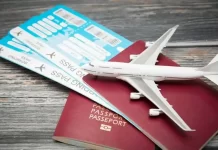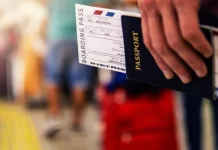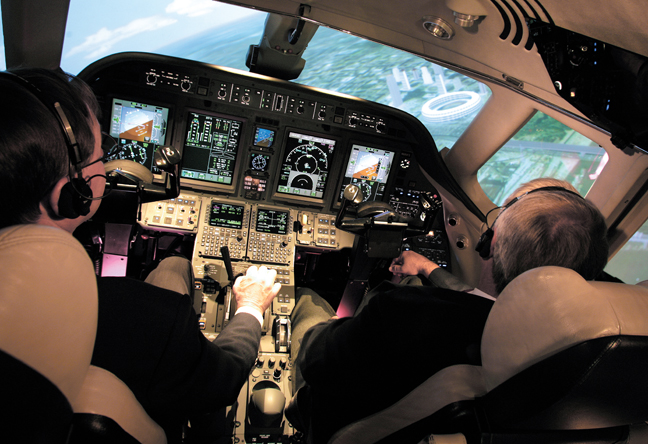Grab the keys and go! In aviation, we know that’s not quite the case when piloting an aircraft. In addition to your other pre-check procedures, have you considered the aircraft’s current maintenance status?
The General Aviation Joint Steering Committee (GAJSC) has identified a number of fatal general aviation accidents caused by flying in an aircraft that is undergoing maintenance and has not yet returned to service. How do you know your aircraft is safe? An informal lockout/tagout procedure should be adopted to ensure that pilots are aware that the aircraft they’re about to fly may not have been returned to service.
Why Placard?
Placards are common in many general aviation aircraft, and for good reason: the message they display is mandatory. In fact, Title 14 of the Code of Federal Regulations (14 CFR) section 91.9 (a) (PDF) says, in part, that no person may operate a civil aircraft without complying with the operation limitations specified in “the approved Airplane or Rotorcraft Flight Manual, markings, and placards.”
Placards also alert us to non-working equipment or instruments. You may operate most types of light aircraft with inoperative instruments, as long as they are not part of the VFR day type certification. In addition, the aircraft must have a placard that says “inoperative.” If the instrument is removed from the aircraft, a placard must provide the status. In all cases, the pilot or mechanic must determine that the inoperative instrument does not pose a hazard to flight safety.
Pilots and mechanics share a responsibility to indicate properly inoperative instruments or equipment. The 14 CFR section 91.405 requires owners or operators to have inoperative instruments or equipment repaired, replaced, removed, or inspected at the next required inspection with placards installed, as required. In 14 CFR section 43.11 (PDF), it says the person performing required maintenance must have a placard placed on the items permitted to have deferred maintenance.
Most aircraft owners are up to speed on the status of their machines, and rental fleets usually have aircraft status boards or squawk sheets that you can review as part of your preflight check. However, occasionally there’s a nasty surprise for pilots who take flight – or try to – in aircraft not ready to be returned to service. To avoid this, make it a point to coordinate with your mechanic before, during, and after maintenance procedures. Ask questions about any procedures you may not be familiar with so that you will have the full scope of the type of work that was performed.
The Lockout/Tagout
Lockout-tagout (LOTO) or lock and tag is a safety procedure that is used to ensure that dangerous machines are properly shut off and not able to be started up again before maintenance or servicing work is completed.
The GAJSC believes that an informal “out of service” or lockout placard or sticker conspicuously placed in the cockpit can go a long way toward preventing flight in an un-airworthy aircraft. Be sure to review any placarding plans you want to implement with your mechanic first. Owners and operators are free to make their own placards to post in the cockpit of aircraft scheduled for maintenance. Before you remove the placard, check to ensure all maintenance is completed and documented.
Before taking flight again, be sure to perform an enhanced preflight to make sure everything is ready to go. Take your time, and use a checklist. Pay particular attention to any area that received service. You may spot a hose or electrical connection that may not have been reconnected, or something else that needs attention. Make sure that all the required inspections are completed and documented.
Finally, after any maintenance, taxi out to do a run-up check, then return to your starting point. Shut down the engine, get out, and carefully look over the entire aircraft. It may be your last chance to catch something that isn’t quite right, tight, or ready for flight!
The Federal Aviation Administration (FAA) and the General Aviation (GA) community’s national #FlySafe campaign helps educate GA pilots about the best practices to calculate and predict aircraft performance and to operate within established aircraft limitations.
A Loss of Control (LOC) accident involves an unintended departure of an aircraft from controlled flight. LOC can happen when the aircraft enters a flight regime that is outside its normal flight envelope and quickly develops into a stall or spin. It can introduce an element of surprise for the pilot.
In his words, the Acting FAA Administrator Daniel Elwell said , “The FAA and industry are working together to prevent Loss of Control (LOC) accidents and save lives. Every month on FAA.gov, pilots are provided with Loss of Control solutions developed by a team of experts – some of which are already reducing risk. I hope you will join us in this effort and spread the word. I know that we can reduce these accidents by working together as a community”.
Some other factors contributing to Loss of Control factors may include:
-Poor judgment or aeronautical decision making
-Failure to recognize an aerodynamic stall or spin and execute corrective action
-Intentional failure to comply with regulations
-Failure to maintain airspeed
-Failure to follow procedure
-Pilot inexperience and proficiency
-Use of prohibited or over-the-counter drugs, illegal drugs, or alcohol
Research by US FAA shows that,
-From October 2016 through September 2017, 247 people died in 209 general aviation accidents.
-Loss of Control was the number one cause of these accidents.
-Loss of Control happens in all phases of flight. It can happen anywhere and at any time.
-There is one fatal accident involving Loss of Control every four days.
This article was gotten from the United States Federal Aviation Administration













